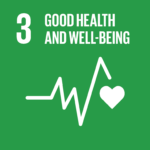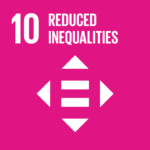Close the cancer care gap ! Cancer prevention and treatment service should be accessible and affordable for everyone !
This year’s World Cancer Day theme is “Close the Care Gap”. The theme focuses on those who cannot access healthcare services and facilities due to a lack of financial means. This is to raise awareness about the vast difference in cancer care and prevention that people from different sections of society can avail. Here are reasons why this year’s theme is ‘close the cancer care gap’.
RELEVANT SUSTAINABLE GOALS


Close The Care Gap : World Cancer Day 2022
Every year on February 4th, the world observes World Cancer Day raising awareness about the fatal illness and its symptoms. The day also aims to inspire immediate action and life-saving treatment and care for all people affected by the disease. The Union for International Cancer Control is in charge of this international awareness day (UICC). Aside from raising awareness, this particular day is also about working together to prevent cancer deaths and give patients the best available treatment.
Cancer claims the lives of over 10 million people each year. Over 65 years of age account for about 70% of mortality. The theme of this year’s World Cancer Day is “Closing the Care Gap.” The theme is to raise awareness about the wide differences in cancer care and prevention available to people from all walks of life. Unfortunately, people with little money, a lack of educational credentials, and impairments encounter significant challenges to receiving cancer treatment.
Transgender people and refugees are two examples of groups that are frequently unable to receive effective treatment until their disease has progressed to an advanced stage. Even race has a role in the availability of cancer treatment choices. As per reports, more than 90 per cent of cervical cancer mortality occurs in middle and low-income countries.
In the last twenty-two years the global incidence of cancer has increased by more than 15%, with unequal access to care being a continuing problem — compounded more recently by the COVID pandemic.
Bridging The Cancer Car Gap : Proven Interventions
Today, it is more vital than ever to bridge the gap in cancer treatment. While the scarcity of healthcare facilities was previously a concern for cancer patients, the current epidemic has exacerbated their woes.
While the saying- ‘better late than never’ might be true in other circumstances, it falls flat in the case of cancer prevention. Cancer is curable when detected early. Early detection is the cue to reduce fatality. Epidemiological studies suggest that 70 to 90% of all cancers are environmental factors. Lifestyle-related factors are most important. Therefore, cancer prevention is possible with the identification of these causative factors. A study conducted to commemorate 50 years of cancer control programs in India found that tobacco-associated cancer sites form 35 to 50% of all cancers in men and about 17% of cancers in women. The study also reported that these cancers are manageable through primary prevention. Therefore, controlling them is possible to a greater extent.
So if we are going to address widening the disparity gap in cancer care, there are proven intervention can be done :
Controlling tobacco use as well as highly processed, refined food.
Primary prevention is the most cost-effective prevention program as it aims to reduce cancer incidence by risk factor modification. Fifty percent of all cancers in males are tobacco-related. A large proportion of them can be prevented by anti-tobacco programs. This has to be publicized more widely. Teenage students need to be targeted as most of them pick up habits at this time. The school curricula should involve messages for a healthy lifestyle and warn about the harmful effects of tobacco and alcohol. Legislation has to be enforced for prohibiting tobacco advertisement and the sale of tobacco to youngsters. A proportion of cancers are related to dietary practices, and the importance of a healthy diet rich in green and yellow vegetables and fruits has to be highlighted. Cancer of the uterine cervix can be controlled to a certain extent by practicing genital hygiene and safe sexual practices.
Preventive Cancer Vaccines
Viral infections are responsible for developing several cancers, and preventive vaccines play an important role in reducing risk. For instance, cervical cancer and head and neck cancer can be caused by the human papillomavirus or HPV. In contrast, liver cancer can be caused by hepatitis B virus or HBV. Several vaccines have been developed that can prevent HBV and HPV infection and, as a result, protect against the formation of HBV- and HPV-related cancers. Four of these preventive cancer vaccines have been approved by the U.S. Food and Drug Administration (FDA

Accessible, timely and affordable Screening Programs
Eliminating disparities in routine examinations will require outreach, availability and cultural consideration. In India, for example, cervical cytology (pap smear) screening programs were found to be successful in reducing cervical cancer incidence and women in the age group 35 to 64 years should undergo regular pap smear screening. Given the limitations in large scale population based screening programmes, India can consider primary prevention of Cervical cancer by promoting genital hygiene and sexual behaviour. States that have achieved a high level of health care delivery can consider starting organised screening programmes. The primary target should be to offer once a life time screening for all women at the age of 40 years. Government and private health care providers can join in this effort and offer these services.
Mammographic screening for breast cancer may not be cost effective in India at present, but regular breast self examination needs to be promoted for early detection of breast cancer. Breast self examination can be propagated through print and electronic media as well as through health care personnel in various settings.
Measures identified and propagated for cancer control in the developed countries may not be applicable for the Indian context. We have to find answers to our problems through methods which are feasible and evaluable in the Indian context, as well as other Asian countries. Cancer prevention needs to be considered as part of the Non Communicable Diseases prevention programme as it will make it more effective and feasible. The risk factors, Alcohol, Tobacco, Bad Diet and Physical inactivity are risk factors for most of the Non Communicable Diseases and has to be approached together as lifestyle modification.
Accessible and Affordable Palliative Care
Improving access to, and awareness and affordability of palliative cancer care is also another critical element in closing the widening gaps. Good cancer care should aim to prevent or relieve suffering caused by cancer and its treatment. This approach can have quantifiable outcomes for patients, including prolonged and improved quality of life. Palliative and community-based supportive care are necessary components and need to be fully integrated into any multidisciplinary health-care plan. Asia’s ageing population presents challenges to the sustained organisation and delivery of comprehensive care for patients with cancer, and several important ethical issues need to be considered.
Lead image courtesy of Tubik Studio.
You may also be interested in :
Is there A Female-Friendly Toilet ? Towards Gender Parity At Public Restrooms


